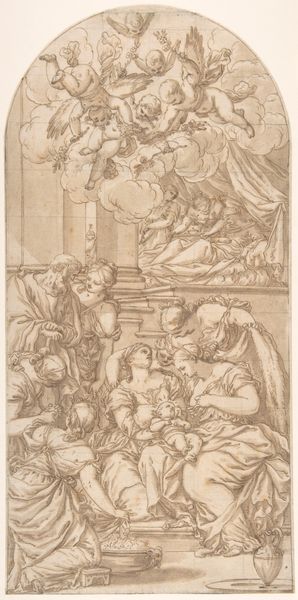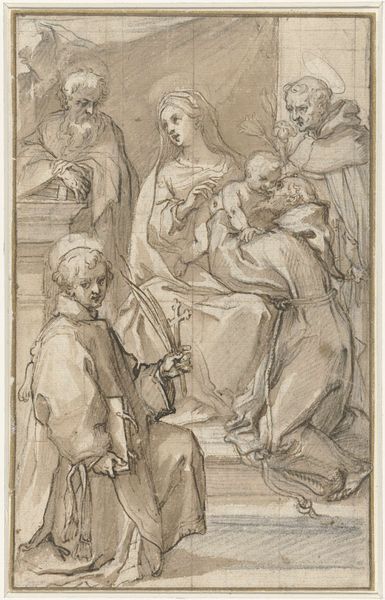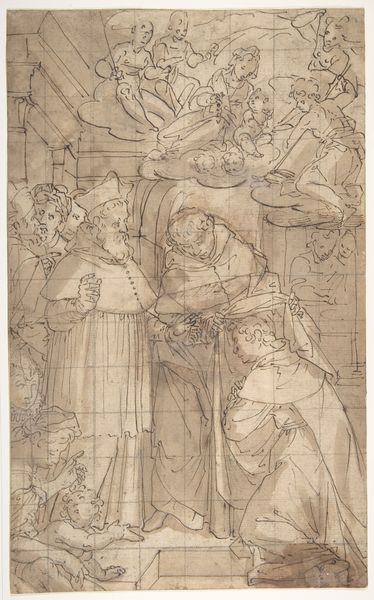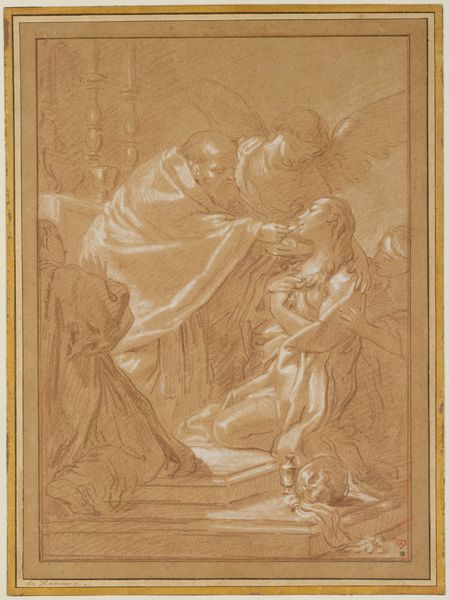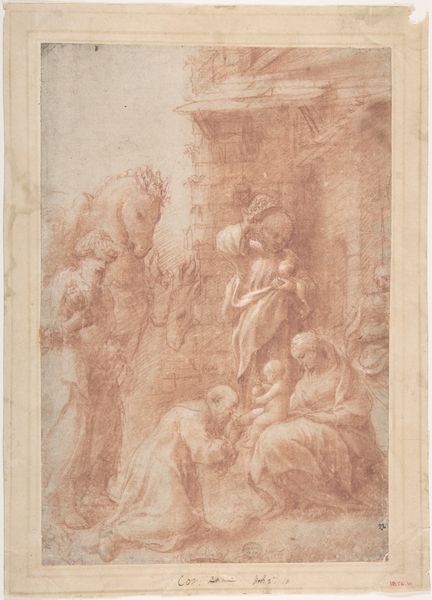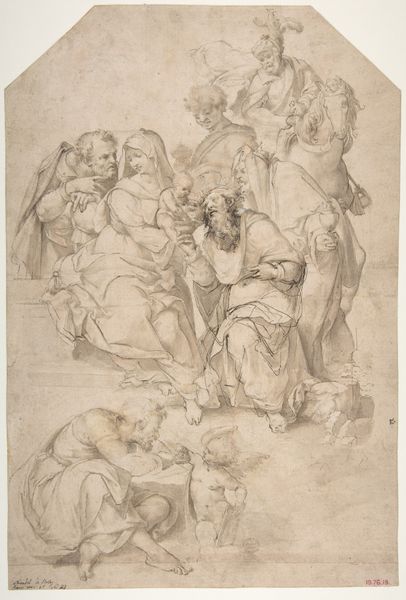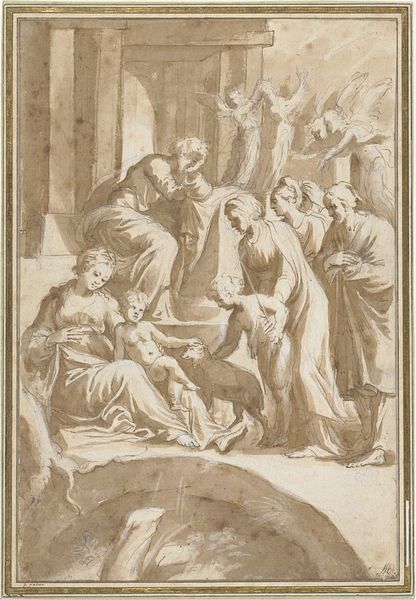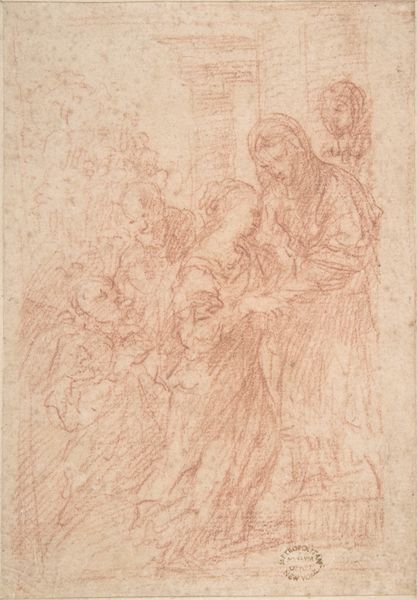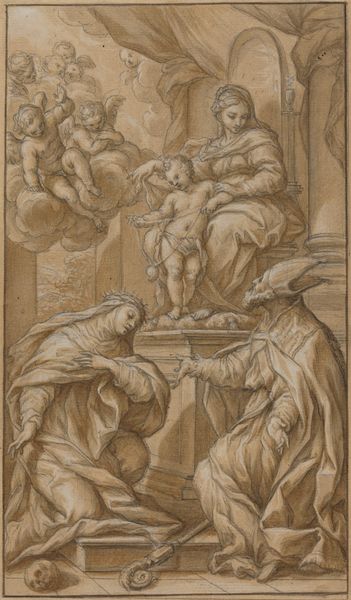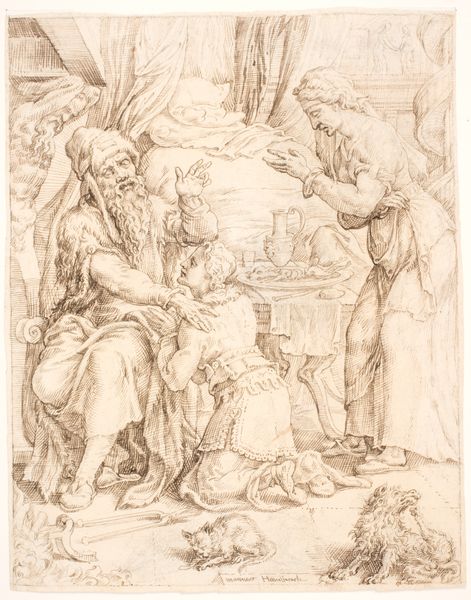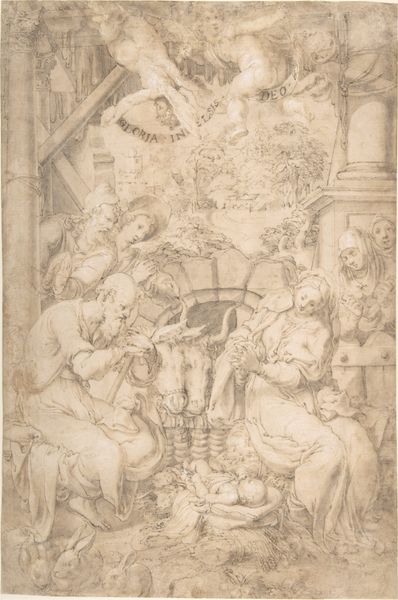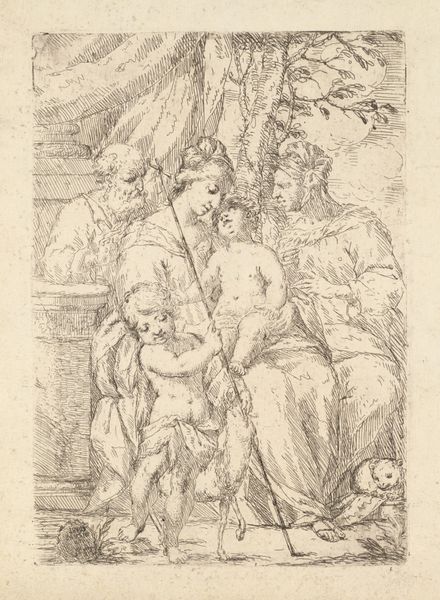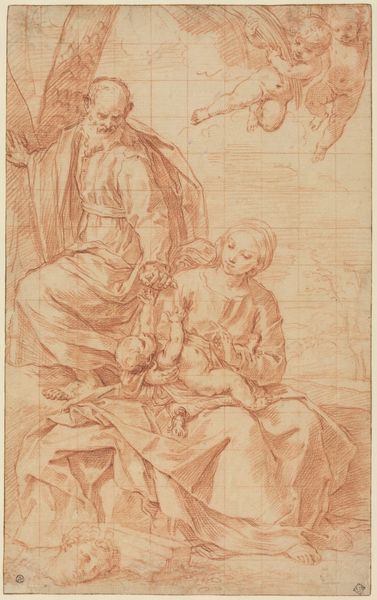
drawing, pen, charcoal
#
drawing
#
narrative-art
#
charcoal drawing
#
figuration
#
pen
#
charcoal
#
history-painting
#
italian-renaissance
Dimensions: height 386 mm, width 267 mm
Copyright: Rijks Museum: Open Domain
Editor: This is Filippo Bellini's "Birth of the Virgin," a drawing made around 1590-1595, with pen and charcoal. I’m immediately struck by the intimacy of the scene, despite the architectural background. It feels very staged. What do you make of it? Curator: It’s interesting you see a sense of staging. This wasn’t merely a personal event but a highly symbolic and public one. Depictions like these served to reinforce the Church's doctrines about the Virgin Mary’s sanctity. Do you notice how the other figures are arranged around the central mother and child? Editor: I do, they almost seem like a chorus surrounding Mary and the newborn baby. There's a servant bringing something, maybe food or a gift? And a woman with cloths. So it reinforces the religious significance through visual cues? Curator: Precisely. Think about the role of images like this during the Counter-Reformation. The Church was keen on re-establishing its authority and did so in part through the visual arts, and here we can see how artistic representations played a key part in disseminating religious messages. Look at the upper section of the drawing: What figures and architectural aspects do you see there, and how does the visual language contribute to conveying certain social and cultural messages about religious power and tradition? Editor: I see some figures there. But what about its display? How would an image like this function within a 16th-century context? Was it a study for something larger? Or a devotional work in itself? Curator: Excellent questions. Its status as a drawing suggests it may very well have been preparatory work. But even so, these drawings often circulated within artistic circles and aristocratic collections. Display would solidify religious standing. This image speaks not just to faith, but to power. Editor: That’s fascinating. It’s helped me see it not just as a scene, but as a cultural artifact. Thanks. Curator: Likewise! Examining how artworks reflected and reinforced historical power dynamics and the cultural messages being conveyed during that era gives a far richer, deeper interpretation.
Comments
rijksmuseum about 2 years ago
⋮
This scene looks homely and friendly. In the foreground, Anna and her newborn daughter Mary are being assisted by two midwives, while a meal is being prepared in the background and a dog is given the opportunity to lick a plate clean. This late 16th-century drawing was made in a period when religious subjects were often depicted in an environment that resembled contemporary everyday life.
Join the conversation
Join millions of artists and users on Artera today and experience the ultimate creative platform.
